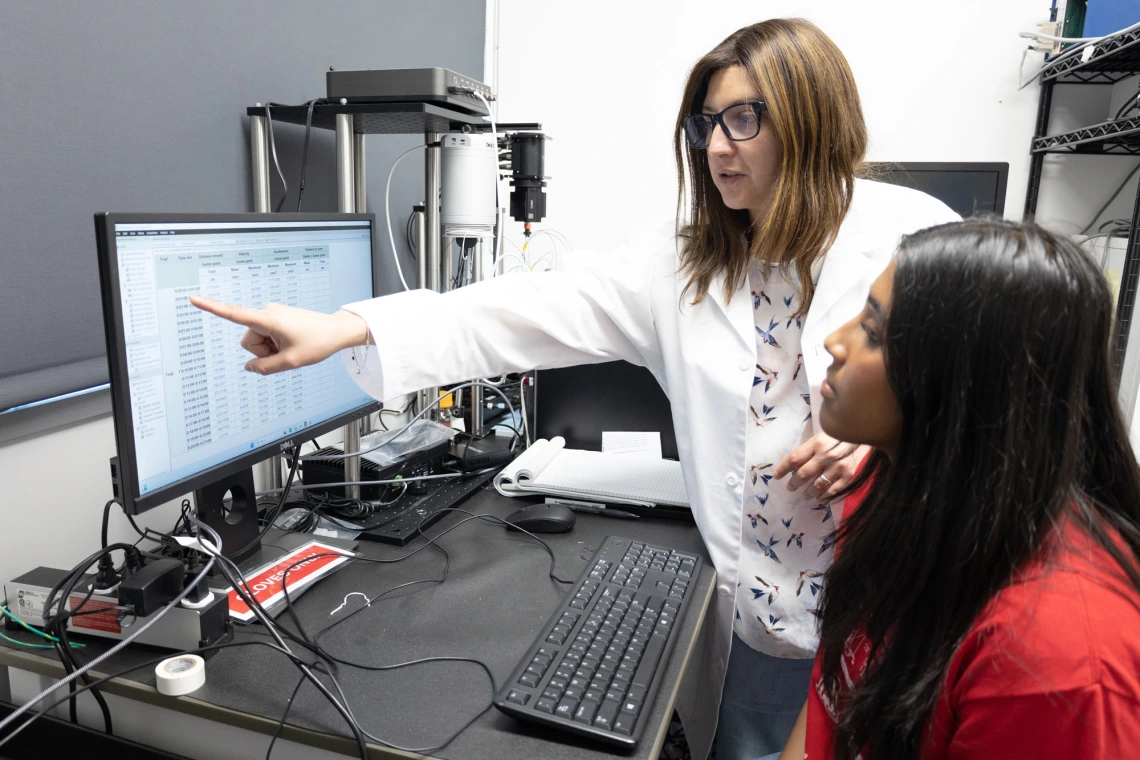Exploring how the brain weighs risk and reward
2025 Phoenix KEYS intern Shivani Satheeshkumar (she/her) studied how the brain helps us make split-second decisions in the lab of Melissa Warden.

2025 Phoenix KEYS intern Shivani Satheeshkumar worked with postdoctoral researcher Pamela Miranda to study what happens in the brain during decision-making.
Deanna Rodriguez, BIO5 Institute
In the lab of Melissa Warden, associate professor of translational neurosciences at the University of Arizona College of Medicine – Phoenix, researchers study how the brain helps us make split-second decisions, for example, whether to chase a reward or flee from danger. A key focus is the lateral habenula, a brain region that may help animals stop or switch actions when threats arise.
Phoenix KEYS intern Shivani Satheeshkumar (she/her) worked with postdoctoral researcher Pamela Miranda to study what happens in the brain when these instincts compete.
“Young scientists realize they can do these complex things—that it’s really about hard work and curiosity,” said Miranda. “Their fresh eyes help troubleshoot problems we’ve gotten too used to.”

Pamela Miranda (left) explains data from the experiment to Shivani Satheeshkumar (right).
Deanna Rodriguez, BIO5 Institute
To investigate, the team used a validated behavioral model that mimics a natural threat, such as a shadow overhead, to observe decision-making responses in the brain in real time. They then analyzed brain activity to better understand how these responses are processed.
“My approach to mentorship is all about lighting a spark,” said Warden. “If students understand why their project matters, it’s empowering and hopefully motivating.”
Satheeshkumar used fluorescent dyes to highlight which brain cells became active during the escape response. Her work will help connect behavior to brain function, a key to understanding how we process threats and rewards in everyday life.
“At school, we learn about neuroscience, but we never actually get to do it,” said Satheeshkumar. “Now that I’ve held the data in my hands, it has made me even more excited to become a doctor and help address healthcare gaps in my community.”

(Left to right) Shivani Satheeshkumar and Pamela Miranda.
Deanna Rodriguez, BIO5 Institute
Take a closer look at how KEYS interns are helping advance real-world research across Arizona.

